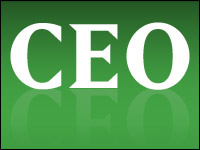
What I think is funny in this market is that most people can look at two companies, see the difference in their performance, and not learn the fundamental lesson — even though it has been repeated over the decades.
Microsoft and Apple are cases in point, because Apple was very successful under the initial founders, then was unsuccessful after the founders left, was successful again when Jobs came back, and now is struggling without him. Microsoft was very successful under Gates, struggled when Gates left, and is successful again now that it is run by someone very much like Gates.
The core magic is this: having someone who is running the company who both understands the technology and understands either the customer’s current needs — or how to manipulate customers to need what you make.
I’ll focus on that this time and close with my product of the week, which has to be the amazing Microsoft Surface Studio, which is arguably what Apple should have shipped.
Steve Jobs Was Unique
I get why Apple struggled to find a replacement for Steve Jobs — not only after he died, but also earlier, after he initially was fired. The guy was unique. After reading a number of books on his life and on his presentation and product secrets, it became clear to me that what made him different was that he both understood technology well enough to direct his firm and understood people well enough to convince us that what we wanted was what he built.
He was absolutely correct in believing that it was stupid to use focus groups as a planning exercise. He understood that people don’t know what they want, and that the successful company is the one that can manipulate them into wanting what it builds.
He became CEO of the decade and built the most financially successful firm in the current age — yet there isn’t another firm in the market that even comes close to emulating his model.
Now the reason we don’t see this model emulated is that if Steve Jobs were to apply for a job at any tech company today with the resume he had at Apple’s beginning, he would not be hired. I think you could say the same of Bill Gates, which really points to what I think is a fundamental problem with the current hiring process.
People who might rise to run a firm like Jobs ran Apple and Gates ran Microsoft can get to the CEO position only if they form their own firms, and right now getting VC money without a degree would be nearly as impossible as getting hired would be.
What I don’t get is why firms don’t have a process specifically designed to bring in passionate creative types who have high IQs but who didn’t do well in schools — or why schools that specialize in creating CEO types, like Harvard, don’t find a better way to find and certify them.
From Jobs vs. Ballmer to Nadella vs. Cook
What also is fascinating is that after Apple’s board saw how Jobs stepped all over Steve Ballmer at Microsoft, it went ahead and replaced Jobs with someone more like Ballmer.
Cook and Ballmer are both good managers. They’re great with numbers, they’re hard workers, and they both love their firms. However, neither has a creative bone in their bodies. They aren’t even remotely charismatic, and the only customers they readily identify with are corporate customers, which is particularly problematic for Apple, which doesn’t really serve that customer base.
In effect, Nadella is very similar to Gates, and Cook is very similar to Ballmer — granted, without the famous temper — and the end result is that Apple has dropped into decline and Microsoft is surging again, albeit with Azure and Web services, which luckily is where the excitement is.
Warring Announcements
It was fascinating to watch the Microsoft and Apple hardware launches last week. The Microsoft launch was focused tightly on creators, Apple’s historic core base, while the Apple launch didn’t seem to focus on users at all. Apple presented a collection of features that don’t seem to be sourced in any clear customer need.
For instance, I’ve never seen customers ask for a flexible secondary touch screen, particularly when the product lacks a primary touch screen. Also ironic is the fact that folks leaving the Microsoft event lusted after both the new Surface Book and, particularly, the Surface Studio, while those at the Apple event seemed disappointed they’d have to settle.
If I were to go back a decade, the exact opposite would have been true. We’d all have wanted what Jobs presented and wondered if Ballmer missed a meeting.
What makes me sad is that we never got to see what would have happened in a Jobs vs. Nadella matchup, because that would have been amazing. I expect that both men would have driven their opponent to ever higher levels of performance.
Wrapping Up: Lessons Learned
There are several things I take away from this. One is that you need a CEO who has a number of key core skills to be successful. A CEO needs to be knowledgeable enough about the products the company builds to manage the process, as well as connected to the folks who buy the products.
The CEO needs to be able to make intelligent choices with regard to product direction, to be able to pitch the offerings effectively, and to be charismatic enough to develop a following. The CEO must be willing to take large measured risks in order to bring out compelling new products that their competitors have to chase, rather than copying what is out there — which, sadly, is more the norm.
We need a better way to get folks like Jobs into companies and to fast-track them into becoming CEOs. Otherwise, it may be a really long time before we again have a firm that stands out like Apple once did. Generally, folks like Jobs choose to go into politics, religion or crime… .
Something to think about this week.
Every once in a while, a firm creates a product that I lust for at first sight. That “once in a while” happened last week at the launch of the Microsoft Surface Studio.
The product is designed for creators, and it made me wish I’d followed in the footsteps of my mother, who was a graphics artist. Sadly, I couldn’t draw to save my life — but if I did, having a tool like this would be amazing.
What’s amazing are the industrial design and image quality. Had I not known better, I would have thought the image on the screen was a taped-on high resolution picture and not a display. Even an inch away, I couldn’t see the pixels. Had someone told me it was an OLED screen and not an LCD screen, I likely would have believed it — the colors were that deep.

It uses a Bluetooth wheel that can be placed on the screen to reconfigure its functions automatically — from selecting colors and brushes to controlling volume and screen brightness. I’ve used wheels like this before, and they are incredibly handy if you are willing to spend the time it takes to learn their functions.
It has only one critical cord in the back, giving you a very clean desktop. The industrial design places most of the electronics in the base, making the result far more stable and far more useful than an iMac. This really is the product Apple should have announced last week.
At just a tad under US$3,000 the Surface Studio isn’t a cheap date, but for those who need a tool like this, it is well worth the money. When placed side by side, it makes a now badly aging iMac look so last century.
The Surface Studio is really for a small set of special people: creators, executives, and anyone who wants to fill their Apple friends with embarrassing envy. That last point alone makes it worth the price of admission, so the Microsoft Surface Studio is an ideal choice for my product of the week.
























































You differentiate between politics, religion, and crime? They’re all focused on relieving people of their money, some perhaps a bit more aggressively than others…
I’d likely say some a bit more focused than others but I get your point.